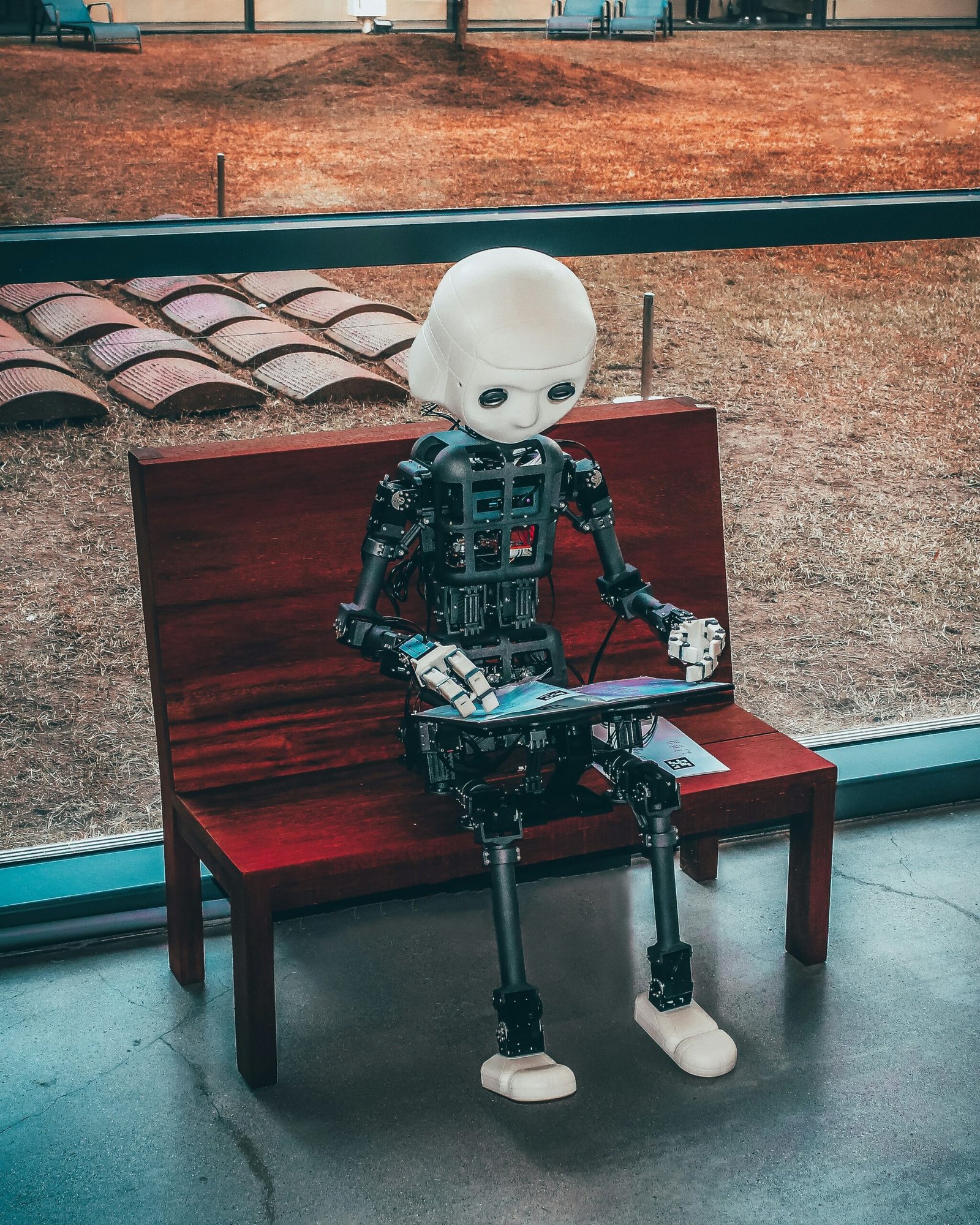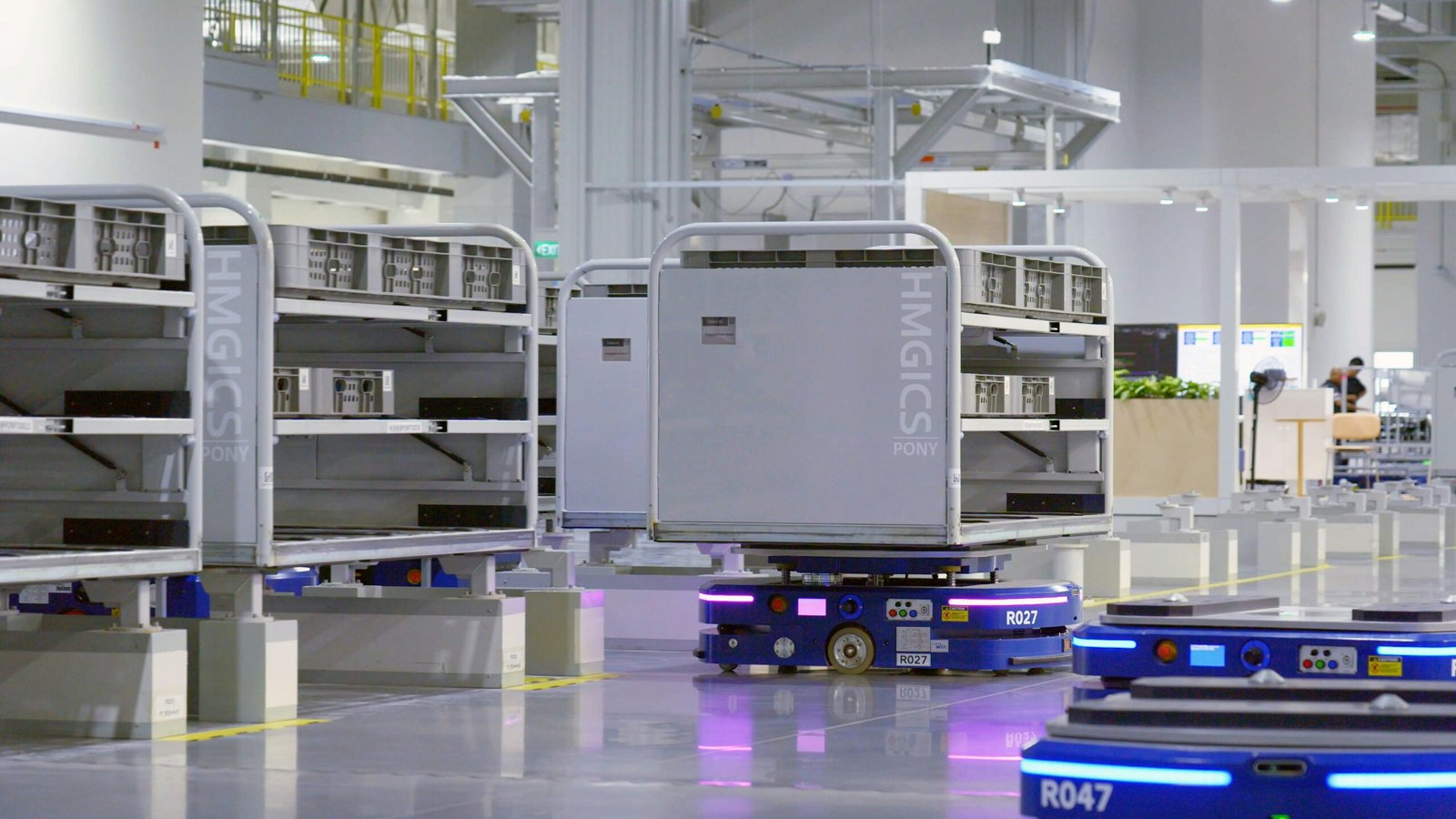
Introduction to AI: Evolution and Current State
Artificial Intelligence (AI) has undergone tremendous evolution since its inception, transforming from rudimentary concepts into one of the most revolutionary technologies of our time. The history of AI can be traced back to the mid-20th century, marked by fundamental breakthroughs and milestones that shaped its course. The initial endeavors in AI concentrated on creating machines capable of solving problems and performing tasks that would traditionally require human intelligence. The advent of the Turing Test in the 1950s, proposed by mathematician Alan Turing, laid the groundwork for evaluating a machine’s capacity to exhibit intelligent behavior.
Throughout the decades, various pivotal advancements emerged, including the development of early neural networks and expert systems in the 1980s, which offered innovative solutions to complex real-world problems. The incorporation of statistical methods and machine learning algorithms in the 1990s catalyzed a new era of AI, enabling systems to learn from data and improve their performance over time. The surge in computational power and the availability of vast amounts of data launched AI into the mainstream in the 21st century, particularly with the rise of deep learning techniques.
As of 2023, AI is firmly entrenched in diverse sectors, including healthcare, finance, and transportation, driving efficiencies and innovation. Notably, AI-driven technologies such as natural language processing and computer vision have made substantial strides, enhancing user experiences and automating a multitude of processes. The integration of AI with emerging technologies like the Internet of Things (IoT) and blockchain further paves the way for transformative applications, solidifying the industry’s position as a critical player in the future of technology. This current state serves as a foundation for discussing ongoing trends and predictions, as AI continues to evolve and reshape the world around us.
Emerging AI Technologies
Artificial Intelligence (AI) continues to evolve at an unprecedented pace, with numerous emerging technologies redefining its applications across various sectors. One of the most significant advancements is in the realm of machine learning, which enables computer systems to learn from data and improve their performance over time without explicit programming. This has profound implications in diverse fields, from healthcare to finance, allowing organizations to make data-driven decisions with heightened accuracy.
Natural language processing (NLP) is another critical area within AI that has witnessed remarkable growth. NLP technologies facilitate the interaction between humans and machines through understanding and generating human language. This technology is being integrated into customer service platforms, virtual assistants, and translation services, driving efficiency and enhancing user experiences. As NLP continues to improve, we can anticipate even more sophisticated applications that leverage context and nuances in human communication.
Moreover, advancements in computer vision are paving the way for AI systems to interpret and understand visual information. This technology is making significant inroads in sectors such as automotive, where it enables autonomous vehicles to navigate safely and efficiently. Additionally, industries like retail and security utilize computer vision for facial recognition and inventory management. The ongoing refinement of these technologies is indicative of a future where AI integration becomes seamlessly embedded in our daily lives.
Robotics, a dynamic segment of AI, is also evolving rapidly. The convergence of robotics and AI is enabling the development of smart systems capable of performing complex tasks autonomously. In manufacturing settings, for instance, robots equipped with AI are streamlining operations and improving safety. As these technologies continue to advance, it offers a plethora of possibilities for transformation across various industries, shaping a future that harnesses the full potential of AI.
AI in Everyday Life: Current Applications
Current Applications
Artificial Intelligence (AI) has increasingly become a significant component of our daily lives, impacting how individuals interact with technology. One of the most common forms of AI in everyday settings is through virtual assistants, such as Amazon’s Alexa and Apple’s Siri. These voice-activated technologies employ natural language processing and machine learning algorithms to understand and respond to user queries. They assist users in managing schedules, controlling smart home devices, and even providing real-time information, thus enhancing the overall user experience.
Moreover, the rise of smart home devices illustrates another application of AI that is becoming prevalent. Devices such as smart thermostats and security systems leverage AI to learn user preferences and habits, leading to increased efficiency and improved security. By optimizing energy consumption and providing insights on home safety, these devices not only simplify daily routines but also contribute to energy conservation efforts.
AI also plays a pivotal role in the entertainment industry through personalized recommendations in streaming services like Netflix and Spotify. These platforms utilize sophisticated algorithms to analyze user behavior and preferences, allowing them to suggest content tailored to individual tastes. This personalized approach enhances user satisfaction and engagement, thereby influencing consumer decisions and shaping viewing habits.
As businesses recognize the potential of AI applications, they are increasingly incorporating these technologies into their operations. Enhanced customer service through chatbots, automated data analysis, and targeted marketing techniques driven by AI algorithms are just a few examples of how businesses can leverage AI to improve efficiency and productivity. The integration of AI in various sectors not only streamlines processes but also opens up new possibilities for innovation and growth.
Overall, the integration of AI into everyday life reflects a broader trend of technological advancement, with numerous implications for both users and businesses. These practical applications of AI continue to evolve, shaping how individuals interact with technology and influencing consumer behavior across diverse fields.
Predicted Trends of AI Development
As we look toward the future of AI, it is essential to recognize the anticipated trends that are likely to shape its development over the next decade. One of the most significant trends is the rise of ethical AI. Industry experts predict that as AI systems become more prevalent across various sectors, there will be an increasing emphasis on ensuring that these technologies are developed and implemented responsibly. This includes essential measures to prevent bias, enhance transparency, and protect user privacy, fostering trust and acceptance among users.
Hyperautomation is another predicted trend that is expected to gain momentum. This concept involves the use of AI and machine learning to automate complex business processes and workflows, effectively amplifying the capabilities of human workers. By integrating AI with hyperautomation tools, organizations can enhance operational efficiencies, drive innovation, and reduce costs. As the technology matures, the potential for hyperautomation to transform industries such as manufacturing, logistics, and customer service will become increasingly apparent, allowing for rapid scaling and better resource management.
The integration of AI with the Internet of Things (IoT) and blockchain technology is also set to redefine the future of these interconnected systems. With IoT devices generating vast amounts of data, AI can play a crucial role in analyzing this information to derive valuable insights and facilitate real-time decision-making. Furthermore, coupling AI with blockchain can enhance the security and integrity of data transactions, setting a new standard for industries where trust and reliability are paramount. This convergence of AI, IoT, and blockchain will likely lead to innovative applications, creating more resilient systems capable of responding to challenges dynamically.
As these trends unfold, it will be fascinating to observe how they manifest in practical applications, ultimately shaping the landscape of AI development in the years to come.
Impact of AI on the Workforce
As artificial intelligence (AI) continues to evolve, its profound influence on the workforce cannot be overstated. The integration of AI technologies into various sectors is anticipated to significantly reshape job markets. One of the most pressing concerns involves potential job displacement. Automation through AI is capable of performing tasks traditionally carried out by humans, particularly in roles that involve repetitive or data-centric tasks. Sectors such as manufacturing, retail, and customer service may witness significant reductions in workforce numbers as AI systems take over these functions.
However, the narrative of AI’s impact on employment is not solely one of displacement. It is also expected to give rise to new job categories that require advanced skills and adaptability. Positions focused on AI development, maintenance, and optimization are likely to grow, as businesses increasingly seek individuals capable of working alongside AI systems. Likewise, jobs that demand uniquely human skills, such as creativity, empathy, and complex problem-solving, are anticipated to flourish. This shift implies that while certain jobs may become obsolete, new opportunities will emerge, counterbalancing the impact of automation.
The necessity for reskilling the workforce is becoming critical in this context. As industries adapt to AI advancements, employees will need to acquire new competencies to remain relevant. Upskilling initiatives and educational programs focused on digital literacy, data analysis, and AI proficiency will be vital in preparing the current and future workforce for the demands of an AI-driven economy. A collaborative effort between educational institutions, employers, and policymakers will facilitate this transition, ensuring that individuals are equipped not just to survive, but thrive in an AI-enhanced job landscape.
In conclusion, the evolving relationship between AI and the workforce presents both challenges and opportunities. Job displacement may occur, but the creation of new roles and the emphasis on reskilling offer pathways to an adaptable and resilient labor market.
Challenges of AI: Ethical and Regulatory Aspects
The rapid advancement of artificial intelligence (AI) technologies presents numerous challenges, particularly in the realms of ethics and regulation. As AI becomes increasingly integrated into various sectors, the potential for bias in algorithms has emerged as a critical concern. Bias can manifest through the datasets used in training AI systems, potentially leading to discriminatory outcomes in applications ranging from hiring practices to criminal justice. Addressing these biases requires not only technological solutions but also a dedicated commitment to ethical guidelines that prioritize fairness and accountability.
In addition to bias, privacy issues continue to surface as AI systems often depend on extensive amounts of personal data for training and operation. The collection, storage, and utilization of this data raise significant questions regarding individuals’ rights to privacy. There is an ongoing debate surrounding how to balance the benefits of AI in enhancing services and efficiencies with the need to protect sensitive information. Striking this balance is crucial in fostering public trust in AI systems, thus affecting their widespread acceptance and integration.
Moreover, the regulatory environment surrounding AI is still evolving. Policymakers and stakeholders are engaged in discussions about creating robust frameworks that safeguard against the potential pitfalls of AI technology. These frameworks aim to address not only ethical concerns and privacy violations but also ensure compliance with existing laws. Ongoing initiatives at national and international levels seek to establish best practices for AI development and deployment, emphasizing the need for collaboration among governments, industries, and academia.
As we look forward to the future of AI, it is essential to navigate these ethical and regulatory challenges thoughtfully. The development of AI technologies must be accompanied by comprehensive strategies that prioritize responsible innovation and societal well-being, enabling AI to truly be a force for good in our lives.
Economic Implications of AI Integration
The integration of artificial intelligence (AI) into various sectors has significant economic implications. By automating processes and optimizing decision-making, AI can foster productivity advancements. For instance, in the healthcare sector, predictive analytics can improve patient outcomes while reducing operational costs. Similarly, AI algorithms can streamline supply chains in the manufacturing industry, driving efficiency and profitability. Moreover, businesses that leverage AI technologies often gain a competitive edge, contributing to overall economic growth. However, the adoption of AI may lead to the displacement of jobs, particularly in low-skilled sectors, raising concerns about workforce transitions and skills training to mitigate unemployment risks.
Social Implications of AI and Inequality
While AI has the potential to enhance societal welfare, it also raises important questions regarding inequality and access. In education, AI-driven personalized learning tools can provide tailored support for students, yet disparities in technology access can exacerbate existing educational inequalities. Similarly, in finance, AI can improve credit assessments, allowing for more inclusive lending practices. Conversely, individuals from underprivileged backgrounds may lack access to AI-based financial services, further widening the gap between different socio-economic groups. The digital divide must be addressed to ensure equitable access to the benefits of AI. Collaborative efforts between governments, educational institutions, and private organizations could facilitate skills development and provide resources for marginalized communities.
Conclusion
In conclusion, the integration of AI across various sectors presents both opportunities and challenges. While its capabilities can drive economic growth and innovation, the associated social implications require careful consideration and proactive measures to mitigate inequalities. Addressing these concerns will be essential for harnessing AI’s full potential while ensuring that its benefits are equitably distributed across society.
The Future of Human-AI Collaboration
The relationship between humans and artificial intelligence (AI) has grown exponentially over the past decade, characterized by a shift from basic automation to more complex collaborations. As AI systems become increasingly sophisticated, their capabilities in processing vast amounts of data, recognizing patterns, and making predictions will significantly enhance professional workflows across diverse sectors. This collaborative tendency is expected to continue, reshaping the way decisions are made in various fields such as healthcare, finance, and education.
Rather than replacing human intuition, future trends indicate that AI will complement human intelligence, offering analytical support and insights that can lead to better and faster decision-making. For instance, in the healthcare sector, AI can assist medical professionals by analyzing patient data to flag potential health risks or suggest treatment options, while the human element remains integral for personalized patient care and ethical considerations. Such hybrid approaches will result in enhanced innovation, where the synergy of human creativity and AI’s computational power fosters novel solutions to complex problems.
Furthermore, as AI continues to evolve, we may observe transformations in the skill sets required in various professions. Workers will need to focus on developing soft skills such as critical thinking, emotional intelligence, and ethical reasoning, while also gaining proficiency in AI tools. This shift signals that future collaborations will not only be about technology but also about enhancing human capabilities to work harmoniously with AI frameworks. With ongoing advancements, organizations will encourage a culture of innovation by promoting experimentation with AI-driven solutions that leverage both human intuition and machine efficiency.
Ultimately, the future of human-AI collaboration heralds an era of unprecedented opportunities for organizations willing to adapt. By embracing AI as a partner in the decision-making process, industries can expect to foster a more dynamic working environment that prioritizes innovation and leverages emerging technologies for strategic advancement.
Conclusion: Vision for the Future of AI
The future of artificial intelligence (AI) is poised to be transformative, offering a myriad of opportunities while presenting significant challenges. As we reflect on the trends and predictions discussed throughout this blog post, it becomes evident that the trajectory of AI development will be influenced by several key factors, including technological advancements, ethical considerations, and regulatory frameworks. These elements will shape how AI is integrated into various sectors, from healthcare to finance, enhancing efficiency and enabling innovative solutions.
One prominent trend is the increasing synergy between AI and human intelligence. As AI systems become more sophisticated, the emphasis will shift towards collaboration rather than competition. This partnership can foster creativity, allowing humans to leverage AI to elevate their capabilities, solve complex problems, and generate new ideas. However, it is crucial to maintain a dialogue about the ethical implications of this integration, ensuring that AI technologies are developed responsibly and inclusively.
Furthermore, predictions regarding the evolution of AI indicate a growing reliance on data privacy and security measures. As organizations harness vast amounts of data to train AI models, safeguarding sensitive information will become paramount. Balancing the benefits of AI with the need for ethical guidelines will require collaborative efforts among developers, policymakers, and stakeholders. The path forward must include frameworks that prioritize transparency and accountability, creating an environment where AI can thrive responsibly.
Envisioning the future of AI entails a commitment to innovation tempered by a sense of responsibility. By anticipating trends and understanding the potential ramifications of AI, we can harness its capabilities while mitigating risks. Ultimately, embracing this technological revolution requires a nuanced approach that respects human values, ensuring that AI serves as a valuable tool for progress across our global landscape.
- Name: Mohit Anand
- Phone Number: +91-9835131568(Sumit Singh)
- Email ID: teamemancipation@gmail.com
- Our Platforms:
- Digilearn Cloud
- EEPL Test
- Live Emancipation
- Follow Us on Social Media:
- Instagram – EEPL Classroom
- Facebook – EEPL Classroom
- Go back to google
Internal links




